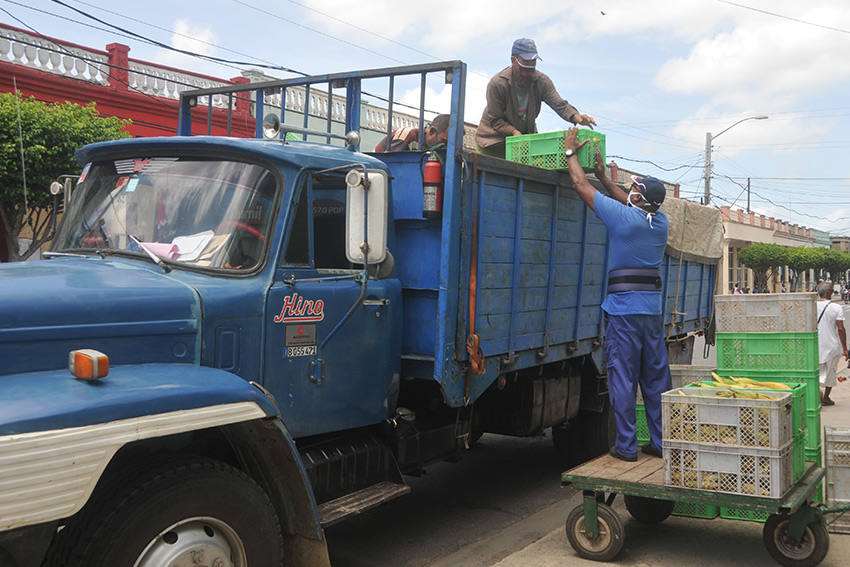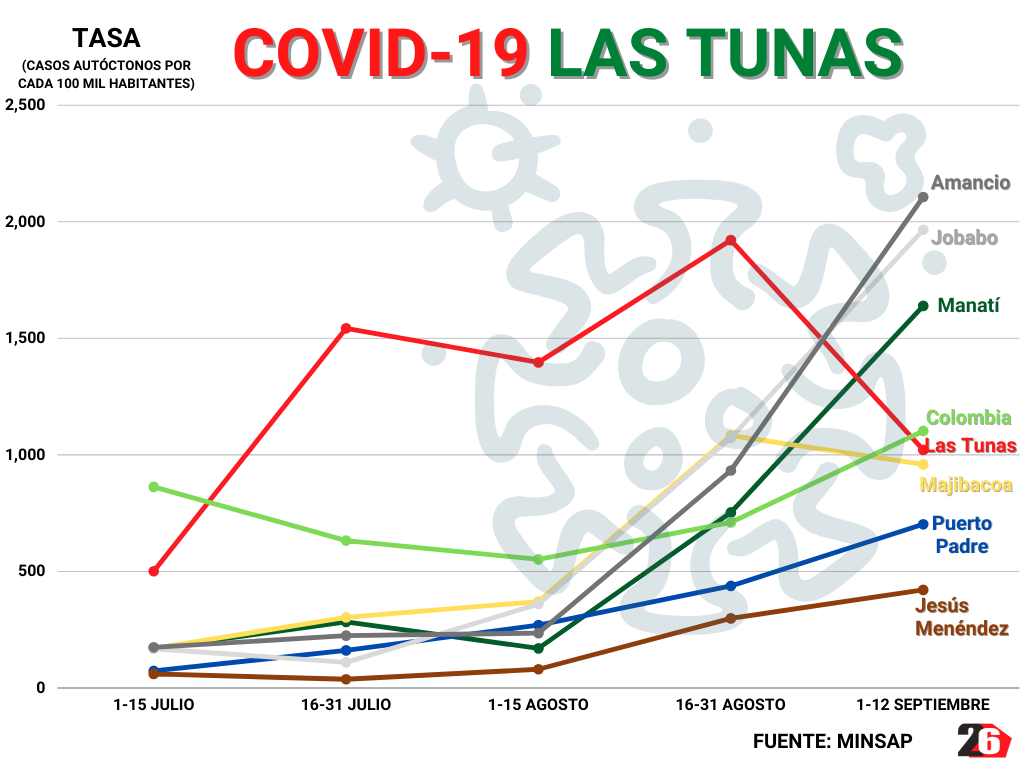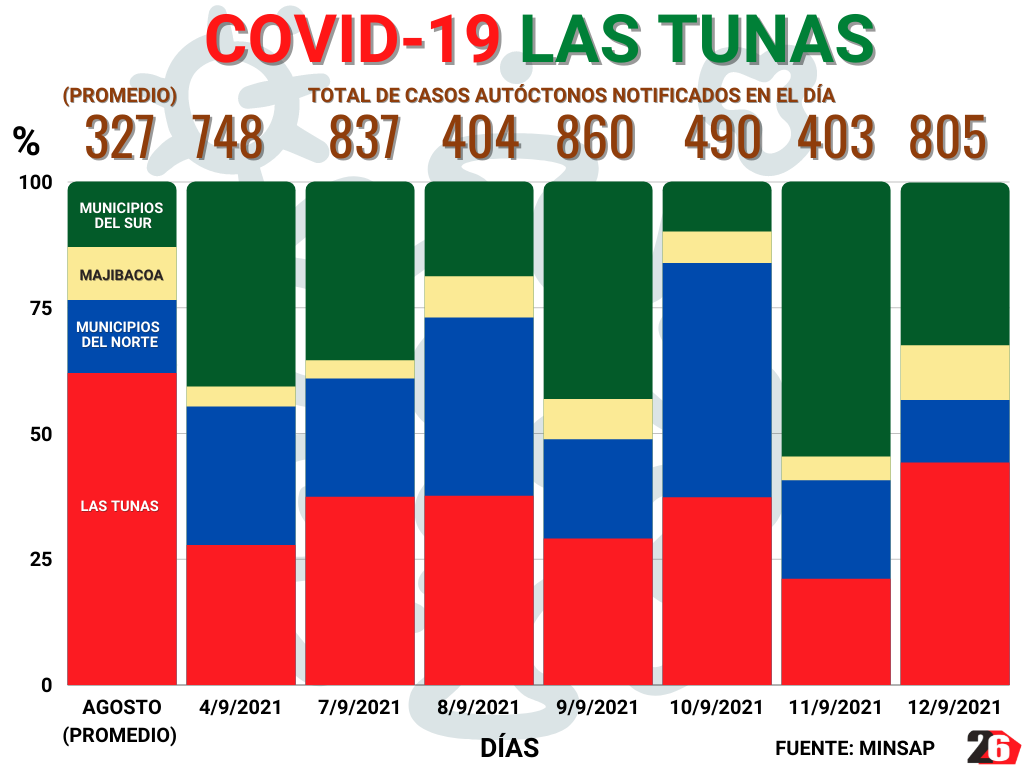
Some services that had remained limited in the capital of the eastern Cuban province of Las Tunas since August 21 were reactivated on Monday; meanwhile, the epidemiological panorama worsens in other municipalities.
Las Tunas, Cuba.- Since September 13, some key service institutions, both state and private, have reopened their doors in the city of Las Tunas, although maintaining the guidelines of limitation of their capacities, hygiene, and distancing indicated to prevent the transmission of COVID-19. Thus, for example, most commercial facilities returned to activity, both in national and freely convertible currency. The food stores had already resumed their normal hours since last week.
For its part, the Postal Company will keep its units open as before, from 8:00 am to 2:00 pm. The branches of the Popular Saving Bank (BPA) resumed their working hours until noon. Its clients, besides collecting salaries and pensions, can carry out operations such as withdrawals and receive transfers. However, BPA representatives clarified that the imposition of transfers, the cash deposit in the accounts associated with magnetic cards, as well as the delivery of these continue to be paralyzed.
The management of the Credit and Commerce Bank (BANDEC) confirmed that responding to the requirements of the population, the supply of ATMs would be increased to three times a day, to lighten the crowds of people to extract cash. Soon, these operations may also be carried out in the local branches of Casas de Cambio S.A. (CADECA), officials from the Provincial Government added. However, the pressure on banking entities to provide ATMs with the required cash by citizens is still high; only in the last two days, some nine million pesos were extracted from these devices in Las Tunas.
Also, the local Division of the Telecommunications Company of Cuba S.A. (ETECSA) resumed operations in all its commercial offices. However, the entity clarified that this step would be subject to the changes and indications of the temporary groups for the confrontation and control of the COVID-19 in each demarcation.

WORRYING DISPERSION
If until August the statistics indicated that the greatest contagion of SARS-CoV-2 was occurring in the provincial capital, in recent weeks this trend could have changed.
Consequently, the Temporary Group reported that it is evaluating the eventual establishment of stricter limitations on citizen mobility in Puerto Padre, Manatí, "Amancio," and Jobabo, whose incidence rates have raised to the point of exceeding that of the provincial capital. In fact, after the first 12 days of September, the main municipality ranked fifth in this indicator.

In August, on average, 70 percent of all the positives reported here were residents of the territorial capital. However, last week, more than half of the new daily confirmed patients were not inhabitants of this city. On Sunday, for example, although the City of Open Doors saw the largest total of patients in the consultations for acute respiratory infections (ARIs), their percentage of positivity to the antigen tests of the studied population was the second-lowest of the whole province.
Given this dispersion of the transmission, the Provincial Temporary Group for the confrontation and control of COVID-19 gave the go-ahead to the increase from one thousand to 1,500 of the number of daily antigen tests to be carried out; and raise the number of beds available for the care of critically ill patients and, in particular, those who require assisted ventilation in the Intensive Care Units of the hospital facilities located outside the city of Las Tunas, with emphasis on those located in the municipalities of “Amancio” and Puerto Padre.
Also, the new organization system of sanitary transport and obituary services that is applied in the provincial capital will be extended to the rest of the municipalities. This includes not only the traditional vehicles of the municipal Health directorates, but also those mobilized from companies and state institutions, and private transporters.
Additionally, this week, 32 experts from Las Tunas will be back in the province, members of the Henry Reeve International Contingent of Doctors Specialized in Disaster Situations and Serious Epidemics. They, who will join their 34 colleagues that returned in previous weeks, come to bring in their homeland the experience acquired after facing the care for patients with COVID-19 in other regions of Cuba and the world.
In the last 15 days, an average of 444 autochthonous cases have been reported daily in the Balcón del Oriente Cubano (Balcony of Eastern Cuba), thus its incidence rate for that same period is 1,269.3 per 100,000 inhabitants. Only on September 12 and 1, the risk of becoming ill in this eastern territory grew by 5.4 percent on average.
Until the end of September 12, 24 percent of Las Tunas population had completed the protection scheme with the Abdala anti-COVID-19 vaccine; the 53 percent in the municipality of Las Tunas. 89.4 percent of students of the final years of the Pre-university, Technical and Professional Education, and Pedagogical Schools have already received the first dose of that same vaccine.




